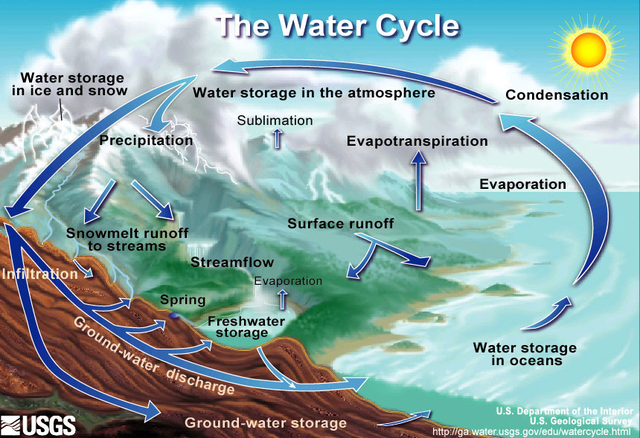Clouds and water vapor accounts for only a tiny fraction of all water
on Earth, but in spite of it, this moisture in the atmosphere is
crucially important to replenishing drinking water reservoirs, crop
yields, distribution of vegetation zones, and so on. This is the case
because in the atmosphere, clouds and water vapor, transports a vast
amount of water from oceans to land, where it falls out as
precipitation. Scientists generally agree that rising temperatures in
the coming decades will affect this cycling of water. And most climate
models successfully simulate a global intensification of rainfall.
However, physical models often disagree with observations and amongst
themselves on the amount of the intensification, and global distribution
of moisture that defines dry and wet regions.

In a paper published in Environmental Research Letters, my co-author and I investigated these model discrepancies (Liepert and Previdi, 2012) (see also here).
We developed a “quality control test” for climate models that is solely
based on physical principles. We retroactively sum up all possible
source, sink and storage terms of atmospheric moisture in models and
postulate that a perfectly balanced physical model is a model without
artificial leaks or floods in the system (note that small terms like
methane oxidation fluxes into the atmosphere, or changes in total cloud
water were not included). This approach of “self-consistency” is in
contrast to previous studies where scientists performed model “reality
checks” of comparisons with uncertainty prone precipitation
observations. Eighteen state-of-the-art climate models as described in
the United Nations 4th Assessment Report (IPCC-AR4) of the
Intergovernmental Panel on Climate Change were included.
We found that most models predict an increase in moisture coming
towards land in the course of the 21st century due to larger warming of
land versus ocean surfaces with moderately increasing greenhouse gas
concentrations. Some models, however predict radically opposite results,
But these few models have large biases, which strongly affects the
multi-model mean. The multi-model mean is often used in climate science
and climate impact studies as “best predictor” since it smooths over
model inconsistencies. These biases appear to be associated with ‘leaks’
in the model whereby water does not appear to be conserved. Some model
leaks are even bigger than the anticipated global precipitation changes
in the 21st century. The multi-model average is therefore biased by
these few and has an average “leak” of the size of the discharge of the
Mississippi river!
With our self-consistency test we were able to identify the outliers
and narrow the prediction uncertainty. Only using the consistent models,
we expect that in this century, the atmosphere will increasingly
transport moisture towards land by the size of the river Nile, and with a
model uncertainty of up to 13 percent of increase.
It is difficult for models to keep track of the small amount of water
contained in the atmosphere (a thousandth of a percent of the total
water on Earth). On the other hand, it is crucially important to plug
leaks in physical climate models because water in the atmosphere plays
an important role in the energy balance of the Earth. A bit fewer
clouds, due to the leaks, can let extra solar energy reach the earth
surface and heat up the planet – lost water vapor would have the
opposite effect. This spurious energy flux in leaky models constitutes a
“ghost” forcing of climate. We calculate that the ghost forcing in the
IPCC models ranges from -1 to +6 watts per square meter, a forcing
comparable to the size of non-carbon dioxide greenhouse gases – though
since it is roughly constant in time it doesn’t impact the transient
runs directly.
These results show that independent quality controls on climate model
simulations are crucial for assessing the quality of future climate
change predictions. Not all models are equally good and should be
utilized in climate impact studies.
Climate impact models
are used, along with crop yield, and hydrology models for instance, to
inform far reaching decision-making. Climate research institutions are
under pressure to build more accurate, more complex models that
incorporate not only the physical climate, but also ecosystem processes
and perhaps eventually, economic impacts. Testing and quality control
should of course accompany these model developments, and it is to the
credit of the modeling groups that they archive enough information in
the public archives of CMIP3 and now CMIP5 that we can do these tests
independently, assess the remaining problems and hopefully improve the
predictions.
No comments:
Post a Comment